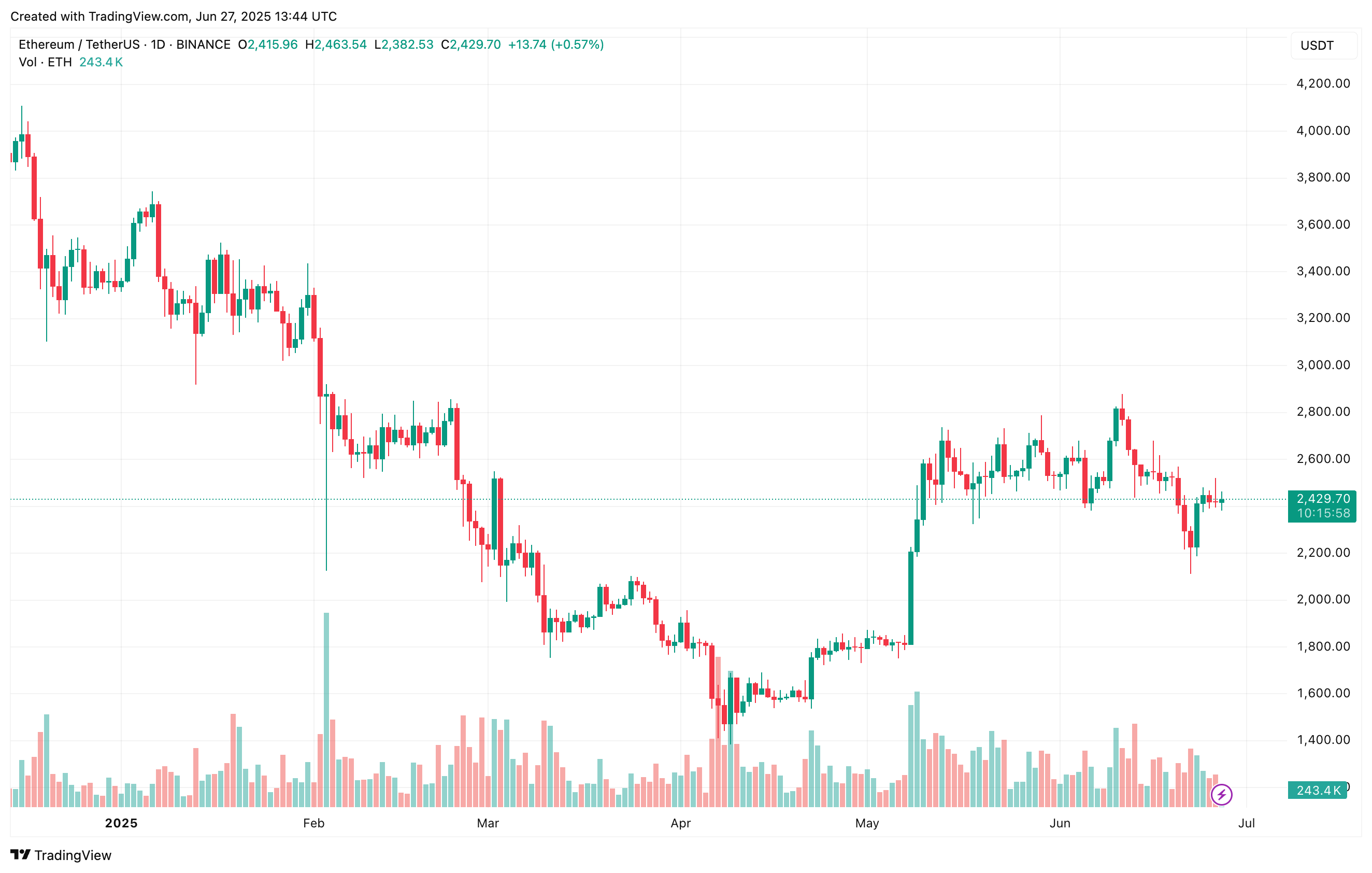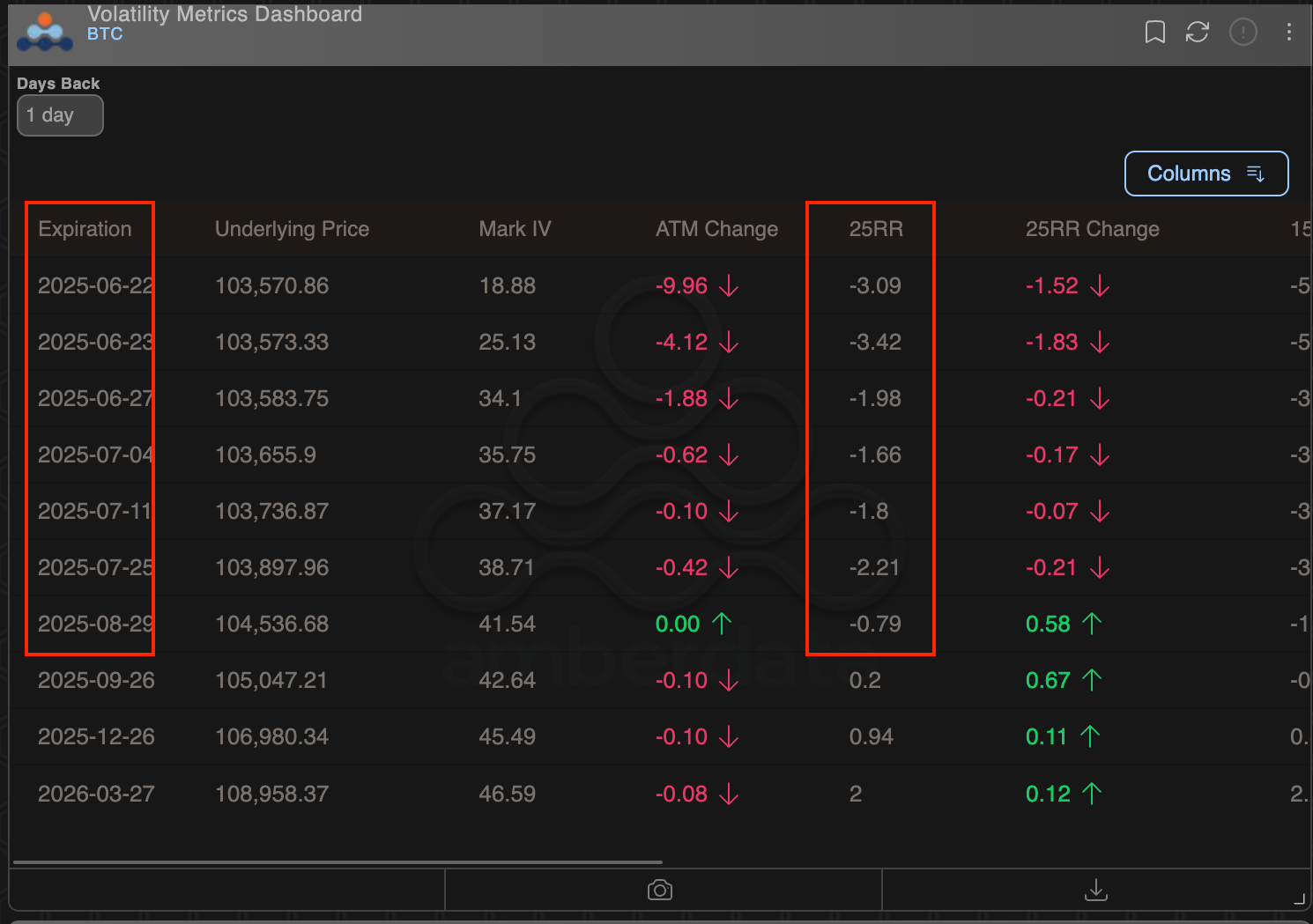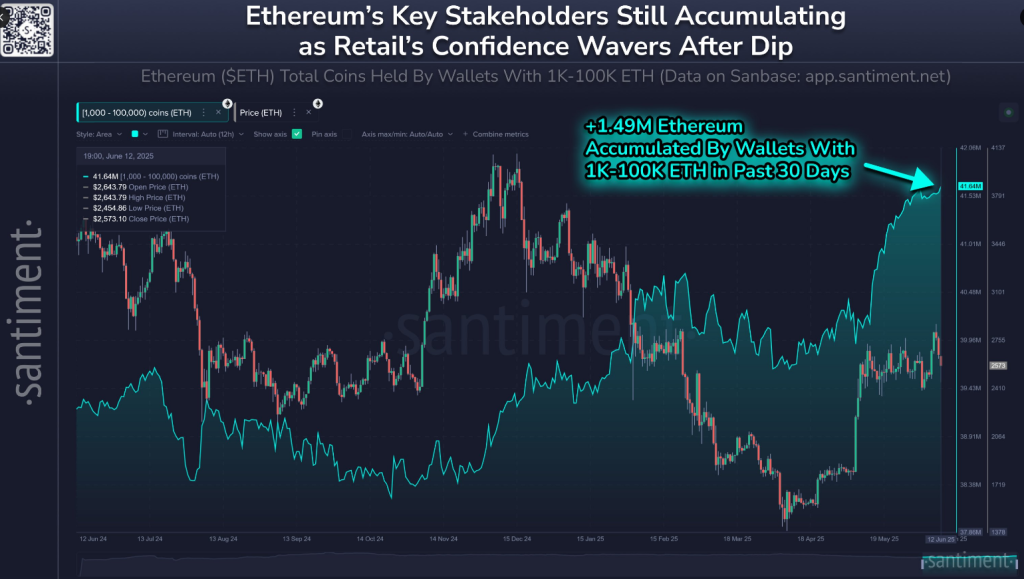Ether (ETH) traded around $2,584.90 on July 3, registering a 0.55% gain over the past 24 hours as risk assets responded positively to robust U.S. labor market data, according to CoinDesk Research's technical analysis model. The broader crypto market, as gauged by the CoinDesk 20 Index (CD20), was up 0.08% during the same period.
According to a report published by CNBC, the latest nonfarm payrolls report showed 147,000 jobs were added in June, beating expectations of 110,000 and exceeding the upwardly revised 144,000 from May. Meanwhile, the unemployment rate fell to 4.1%, defying forecasts for a rise to 4.3%, according to the Bureau of Labor Statistics.
The strong data sent U.S. equities surging to fresh all-time highs, with the S&P 500 closing at 6,279.35 and the Nasdaq Composite finishing at 20,601.10 — both up more than 0.8% on the day. The Dow Jones Industrial Average also gained 344 points to settle at 44,828.53.
However, the strength of the labor market complicated the outlook for monetary policy. It now seems highly unlikely that the Fed will lower rates at its next meeting and traders are no longer even certain that there will be any rate cuts in the second half of this year.
Despite this, ether remained resilient, with traders encouraged by the broader risk-on sentiment that lifted crypto alongside equities.
Technical Analysis Highlights
- ETH traded within a $71.20 range between $2,558.89 and $2,629.88 over the July 2 18:00 to July 3 17:00 window.
- A breakout during the 13:00 UTC hour on July 3 pushed price to $2,625.10, the session high, on volume of 464,365 ETH.
- A pullback followed during the 15:00 hour with ETH touching $2,569.18 before finding solid support.
- The 17:16 UTC candle saw a sharp volume spike (5,308 ETH), lifting price to $2,580.75 before brief consolidation.
- In the final hour from 16:59 to 17:58 UTC, ETH gained $4.93 (0.19%), closing near $2,584 with a bullish structure of higher lows.
- Resistance remains near $2,630, with momentum favoring a potential retest if macro conditions remain supportive.
Disclaimer: Parts of this article were generated with the assistance from AI tools and reviewed by our editorial team to ensure accuracy and adherence to our standards. For more information, see CoinDesk's full AI Policy.




 There are currently 6,392 wallets holding between 1K and 100K Ethereum. Over the past month alone, these key whale and shark wallets have rapidly added more coins as retail traders have taken profit.
There are currently 6,392 wallets holding between 1K and 100K Ethereum. Over the past month alone, these key whale and shark wallets have rapidly added more coins as retail traders have taken profit.